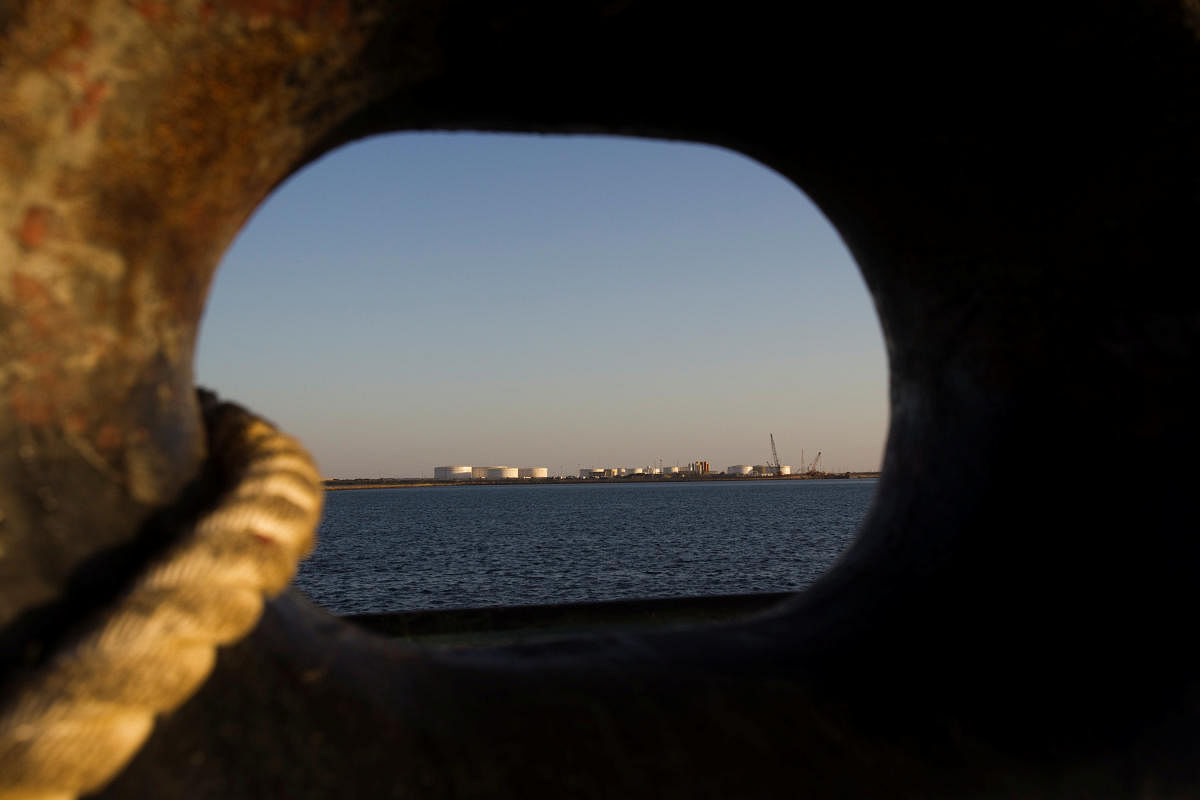
In her maiden budget, Finance Minister Nirmala Sitharaman has slashed the allocation of funds for the development of the Chabahar Port in Iran from Rs 150 crore to Rs 45 crore for the current financial year. It has generated significant commentary in the media though the government is insisting that if required, more funds will be made available for this project.
Highlighting the importance of the Iranian port for New Delhi, Indian Ambassador to Tehran Gaddam Dharmendra said India will fulfil all its commitments in Iran’s Chabahar Port despite the economic hurdles. Viewed as a response to Pakistan’s Gwadar Port, Chabahar connects India with Afghanistan bypassing Pakistan. It also provides connectivity for India to Central Asia and the wider Eurasian landmass.
India signed a trilateral agreement with Iran and Afghanistan in May 2016 on the development of Chabahar Port in Tehran with the aim of establishing a strategic transit and transport route connecting the three countries. This pact was aimed at ensuring the development of Chabahar Port into a regional trade hub for which New Delhi had issued a credit line of $150 million through Exim Bank in 2016.
The first phase of the port was inaugurated in December 2017 and commercial activity began in January this year when India took over operations of a part of the Shahid Beheshti Port, Chabahar. Recognising its strategic importance for Afghanistan, the US has not sanctioned the port and has given India an exemption even after US President Donald Trump decided in April not to renew exemptions that let eight countries, including India, buy Iranian oil without facing tough American sanctions.
But the ground realities are getting difficult as those vendors who are to supply equipment for the port are now reluctant to deliver for fear of antagonising the US. The private sector seems to be giving up on the project, which is challenging the operational environment. India’s ability to respond to these challenges remains rather limited for all the blame that many in India and Iran might be laying at India’s doorstep. It is rather interesting that some of the suppliers are Chinese as well.
The larger reality of Indo-Iran relations and Iran’s escalating dispute with the US will shape the future trajectory of the Chabahar project. Until May, India was the second largest buyer of crude oil from Iran, after China. But after the US ended its sanctions waiver, which had allowed India to import Iranian crude oil, India’s energy ties with Iran have undergone a change.
Tehran had previously attracted Indian buyers with lucrative provisions, such as free shipping and extended credit. However, the revival of US sanctions on Iran has forced New Delhi to change its calculus.
In 2018-19, despite mounting US pressures to cut oil imports, India had purchased 4,79,500 barrels of crude oil per day, more than what it had purchased in the previous financial year. After Trump administration ended its Iran sanctions waiver for India, the US encouraged its oil-producing allies, including Saudi Arabia and the United Arab Emirates, to boost production and provide stability in the international oil markets. In an interesting shift, there has been an increase in India’s oil imports from the United States, outpacing imports from its traditional suppliers in West Asia.
India is also getting assurances from the UAE, which has promised to cover for any shortages that India would face owing to the current situation. The continuing tensions in the Strait of Hormuz and the proximate region have made India nervous. The ongoing crisis could have further ramifications, as India’s dependence on imported crude oil has hit a multi-year high of 84% this year.
On the other hand, India’s domestic oil output has fallen from 36 million tonnes in 2015-16 to 34.2 million tonnes in the most recent fiscal year, which raises concerns in New Delhi about the future of the country’s energy security. It is therefore important for India that West Asia region remains stable. Trends toward a military confrontation wouldn’t serve its interests.
Other concerns
India also has extensive trade, investment, security and people-to-people ties with countries in the region. As External Affairs Minister S Jaishankar underlined during his recent meeting with US Secretary of State Mike Pompeo, “energy security is part of it [situation in the Gulf], but there are other concerns as well about diaspora, regional security, and trade.”
The US sanctions regime has hurt India’s trade with Iran. While Indian companies are now hesitant to do business with Iran, foreign companies, including those from Europe and China, are refusing to participate in the Chabahar project, and that has slowed its development. Despite assurances from the US that its sanctions regime would spare legitimate non-fossil fuel-related business between India and Iran, Washington’s secondary sanctions target companies which indulge in Iran’s port and shipping sector, which makes Indian investments in Chabahar and other associated developments around it vulnerable.
Though the US has issued India a waiver to develop Chabahar port, the Trump administration’s crippling economic sanctions on Iran have ensured that companies remain wary of engaging the Iranian ports sector, resulting in slowing down of trade via Chabahar.
India’s West Asia policy has traditionally tried to balance the three poles in the region: the Arab Gulf states, Israel and Iran. As Trump turns the screws on Iran, it is this policy that may increasingly become untenable.
(The writer is a Distinguished Fellow at Observer Research Foundation, New Delhi, and Professor of International Relations, King’s College, London)